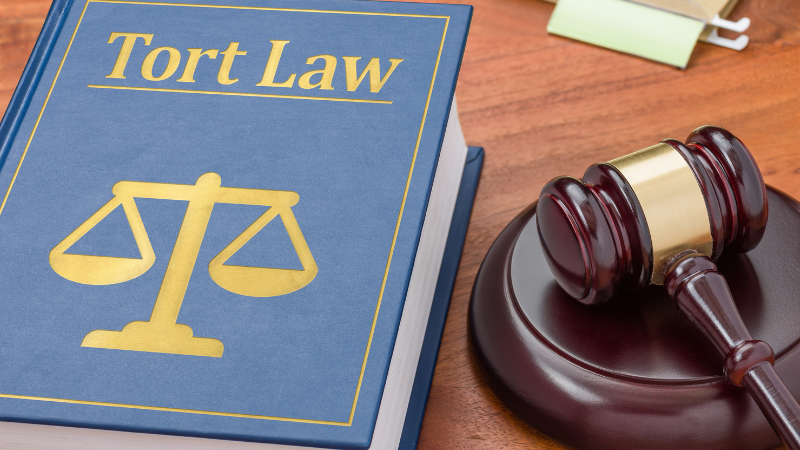The Local Government Liability Balancing Act
- 10/6/2022 5:20 am

Municipalities within the State of Tennessee provide vital services to their citizens. City employees are faced with tough decisions every day about what services to provide, how to provide those services, and how to best manage taxpayer dollars.
Liability exposures arise from these day-to-day operations. The Tennessee Governmental Tort Liability Act (TGTLA) embodies the balancing act between managing taxpayer dollars and protecting citizens’ rights (to recovery for injuries or damages caused by negligence of a governmental entity).
Generally speaking, a Tort is a civil wrong causing injury or damage to persons or property. Prior to the passage of TGTLA in 1973, local governments were totally immune from liability for torts done in their governmental capacity, but they could be liable for torts done in a proprietary capacity. The State Supreme Court indicated it would abolish this “sovereign immunity” for governmental acts if the legislature did not act. As a result, the TGTLA was passed.
The concept of sovereign immunity comes from the English Common Law that the “king can do no wrong” and the idea that you cannot bring into court the creator of the court. Prior to the TGTLA, police, fire and general administration were the types of governmental functions that enjoyed total immunity from tort liability. However, proprietary functions, such as water and sewer services, electrical services and mass transit, had total liability for their actions.
The TGTLA was passed in an attempt to balance the needs of individuals seeking recovery for injury or damage negligently caused by a governmental entity with the necessity of offering financial protection for governmental entities so they can continue to provide public services for their citizens.
Tort Liabilities
Tort liabilities are the responsibilities for wrongful actions or inactions, as imposed by law. The Tort Act left the sovereign immunity intact and then created statutory exceptions to this immunity, based on the governmental entity’s negligence.
Negligence is the failure to use the same degree of care that a prudent person would ordinarily use under the same or similar circumstances.
Negligence must be proven based on the following four elements:
1. You had a duty to act
2. You breached that duty
3. Your breach of duty was the proximate cause of the injury
4. An actual injury or damage did occur
Governmental entities receive sovereign immunity from many lawsuits, but the TGTLA removes immunity from governmental entities when injuries arise or result from:
· Negligent operation by any employee of a motor vehicle or other equipment while in the scope of employment
· A defective, unsafe or dangerous condition of any street, alley, sidewalk or highway owned and controlled by such governmental entity
· A dangerous or defective condition of any public building, structure, dam, reservoir or other public improvement owned and controlled by such governmental entity
· A negligent act or omission of any employee within the scope of his employment (subject to several exceptions)
Actual notice is defined as notice expressly and actually given. Constructive notice is information or knowledge of a fact.
A municipal employee acting within the scope of his/her employment has the same immunity from liability as the governmental entity, and if the employee is found liable, his/her liability is limited to the same amounts established for the government itself.
Monetary Limits of Liability
Perhaps the greatest financial protection for both local governments and taxpayers is the monetary limits of liability set by TCA Section 29-20-403(b) (2) A. These limits apply to any claim occurring within the State of Tennessee and other claims to which Tennessee law is applicable.
As of July 1, 2007, these limits are as follows:
· $300,000 — Bodily Injury or Death of any one person, in any one accident, occurrence or act
· $700,000 — Bodily Injury or Death of all persons, in any one accident, occurrence or act
· $100,000 — Property Damage for injury to or destruction of property of others, in any one accident, occurrence or act
Non-State and Non-Tort Liabilities
Not all the exposures of governmental entities fall under the protection of the TGTLA. Claims arising outside the State of Tennessee are not subject to the TGTLA due to the fact that Tennessee state law does not have jurisdiction across state lines. The key point to remember is claims that arise outside the State of Tennessee and federal actions do not have the same monetary tort limits. This means your exposure for these out-of-state and/or federal cases is much larger than claims that fall under the TGTLA. In addition, many other states have their own version of the Tort Act, with different monetary limits.
Why Does This Matter to You?
The Governmental Tort Liability Act governs many civil suits that affect you. Local governments work every day to serve their citizens and constituents with limited resources. Having a basic understanding of what makes your entity negligent, and what your entity can be sued for, helps policymakers, administrators and staff members as they carry out their duties.
Do you have questions about why the Tennessee Governmental Tort Liability Act was created or how it impacts you? Our member services team can provide more information or discuss it with you.

This information is a summary of the Governmental Tort Liability Act and is not to be construed as the actual wording of the law nor an interpretation of the law itself.
Categories
-
Annual Report
(5)
-
Audit Requests
(2)
-
Board of Directors
(19)
-
Claims
(26)
-
Cyber Extension
(4)
-
Cyber Security
(27)
-
Dividend
(7)
-
EHS Hero & HR Hero
(16)
-
Employment Practices Liability
(26)
-
Excellence In Risk Management Awards
(18)
-
Fireworks
(1)
-
First Responders
(9)
-
Grants
(23)
-
Law Enforcement
(16)
-
Local Government Risk Academy
(4)
-
Loss Control
(105)
-
Member Services
(11)
-
Message From the President
(20)
-
MTAS
(10)
-
Municipal Sewer System
(4)
-
Partnering for Success Webinar Series
(31)
-
PEP Staff
(32)
-
Qualified Immunity
(3)
-
Risk & Insurance Symposium
(42)
-
Safety Program
(56)
-
Scholarships
(20)
-
Social Media
(2)
-
Training
(76)
-
Underwriting
(32)
-
Workers' Compensation
(27)
- Annual Report (5)
- Audit Requests (2)
- Board of Directors (19)
- Claims (26)
- Cyber Extension (4)
- Cyber Security (27)
- Dividend (7)
- EHS Hero & HR Hero (16)
- Employment Practices Liability (26)
- Excellence In Risk Management Awards (18)
- Fireworks (1)
- First Responders (9)
- Grants (23)
- Law Enforcement (16)
- Local Government Risk Academy (4)
- Loss Control (105)
- Member Services (11)
- Message From the President (20)
- MTAS (10)
- Municipal Sewer System (4)
- Partnering for Success Webinar Series (31)
- PEP Staff (32)
- Qualified Immunity (3)
- Risk & Insurance Symposium (42)
- Safety Program (56)
- Scholarships (20)
- Social Media (2)
- Training (76)
- Underwriting (32)
- Workers' Compensation (27)